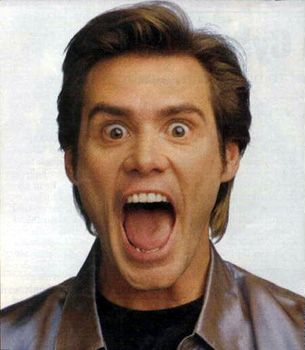Man I'd love a free $15...is that in San Seriffe dollars?
...instead here's a hint (not least 'cuz I'd probably gum something up), signed means it's half the value but one of the bits just denotes the polarity (first bit I think?)
Octal = numbers 0 from 7.
Reading the values from that chart is simple, start at 0 and by the sixteenth value you're at F (0-9 and then A-F). Half the work is already done because the first three numbers say which row you're on, just start counting from there (keeping in mind to count from 0 and not 1 though, I believe; i.e. 822 is the third value, 'cuz 820 is like a 10 - you don't call 10 11, it's got the placeholder value in it).
gameoverDude wrote:C2) (contents of D82A) = 62h, find octal value
6(16) + 2(1) = 96+2= 98
98/64 = 1 R34
34/8 = 4 R2
98 = 1(64) + 4(8) + 2(1)
142 octal
Disclaimer: there may be FASTER and SLIGHTLY SHORTER ways to do some of these, that said, I don't have a lot of this stuff memorized so I have to do it the long way, same as they want students to.
6(16) = conversion to decimal, i.e. 62 decimal aka base10 = 6(10) + 2, whereas 62 hex = 6(16 for the place holder) + 2
98/64 = (still using decimal notation) starting with the largest even octal value we can divide into. How to find the largest octal value we can divide into?
Hex = each place is 16 times bigger than the last, i.e. instead of base10 1000, 100, 10, 1 etc. the values are 65536, 4096, 256, 16, 1.
With octal, each place is EIGHT times bigger than the last, so the values are 4096, 512, 64, 8, 1.
98/64 = 1 R34 = R is remainder of course. Next up, the next place value, the 8 place.
34/8 = 4 R2 and the 2 fits in the ones column. Then add it up.
C3 attempt, with no promises (except that I checked it and iz correct):
Value @ 855 = 71; value @ 85E = 23 (very easy to pick up the last few 'cuz E is the second to last, F is the last, etc.)
We work from the opposite side from dividing (in this case little to big) so we can carry upwards (this is arithmetic after all). This next part I was shaky on for some reason: It's in hex, so the result should be 94H. Right? No carry visible...that was too easy. I'm thinking next they'll throw one at you that requires multiple carries, having boosted your confidence in using the numbers...
C4 attempt, I'm feeling FRISKAY
First, convert 124 to hex (BOO HISS): 124/128 nope, 124/64 1 R60, 60/32 1 R28, 28/16 1 R12, 12/8 1 R4, 4/4 1 R 0, twos and ones place empty
this is 1111100 binary
group by four (pad first three with a leading 0) and convert to hex: 0111 1100
7C
Okay, now add 7C to 26.

RUH ROH WE NEED 2 CARREY!!1111
C+6 = 12h, see, that's C+4 = 10h remainder 2h
Now add the sixteens places and the carry: 7 + 2 + 1 = A
Total value is...A2!!!
HOW THE HELL DID I MANAGE THAT?! AMAZING. I did check my work with the amazing Microsofts Calculator in scientific mode though.
Two's complement isn't so bad, if you're shaky just pull out ye olde values chart to see how that works. It's kind of strange and there's no visible pattern in the ones and zeroes (unless you do the simple operation), but it's doable by memorization.
okay bye


